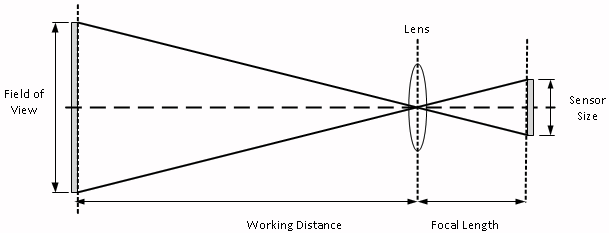I will try to answer this without diagrams.
Light from an illuminated object leaves every point on the surface, spreading outwards in straight lines. For you to see the object, the divergent rays of light need to be brought back together so that they land on your retina in such a way that their relative locations on your retina match the relative locations of the points from which they left the object.
If the object is a pink circle, say, then the diverging light rays from each point on the circumference of the circle need to be brought back together to land in a corresponding circular pattern on your retina. Your brain interprets the signals from the retina as an image of the object.
The simplest way to do this is if the light rays travel directly from the object to your eye, and the lens of your eye bends the diverging rays so they land in the right pattern on your retina.
However, there are other ways to manipulate the light rays so that they can arrive at the lens of your eye and be bent to form an image on your retina.
One way is to insert a concave lens between the object and your eye. The lens simply increases the divergence of the rays. Your eye can still bend them to fall on your retina. This tricks your brain somewhat, since the bending of the light by the concave lens makes the light rays appear to have come from a point between the object and the concave lens.
Another way is to use a convex lens. This bends the light rays so that they converge to a point and then spread out again before reaching your eye, where your eye's lens bends them again to focus on the retina. This tricks your brain in a different way, since the brain now interprets the light rays as having come from the point where they were converged by the convex lens.
In all the cases I have described, what you actually see is an image on your retina. That can be:
1: light coming directly from the object itself, being bent for the first time by your eye.
2: Light appearing to come from a point between the object and an intervening concave lens.
3: Light appearing to come from a point between a convex lens and your eye.
In 3, we say that a real image is formed by the convex lens. What we mean by that is that the lens bends the rays of light so that they converge in such a way that their spatial arrangement corresponds to the relative positions of the points at which they left the object.
In 2, we say that a virtual image has been formed, because if you trace the rays backwards, they appear to have come from a source that again resembles the original object, although that is just an illusion.
The reason why convergence, or apparent convergence in the case of a virtual image, is important, is that your brain seems to interpret images by in effect tracing back along the path of the light rays to their source. When you see a pink circle what you are seeing is the collection of points from which the light rays hitting your retina appear to have originated. If the light rays are made to converge to a point and re-diverge by a convex lens placed in from of the object, then to your brain it seems that the rays originated from that intermediate point of convergence, so that is what your brain 'sees'.









